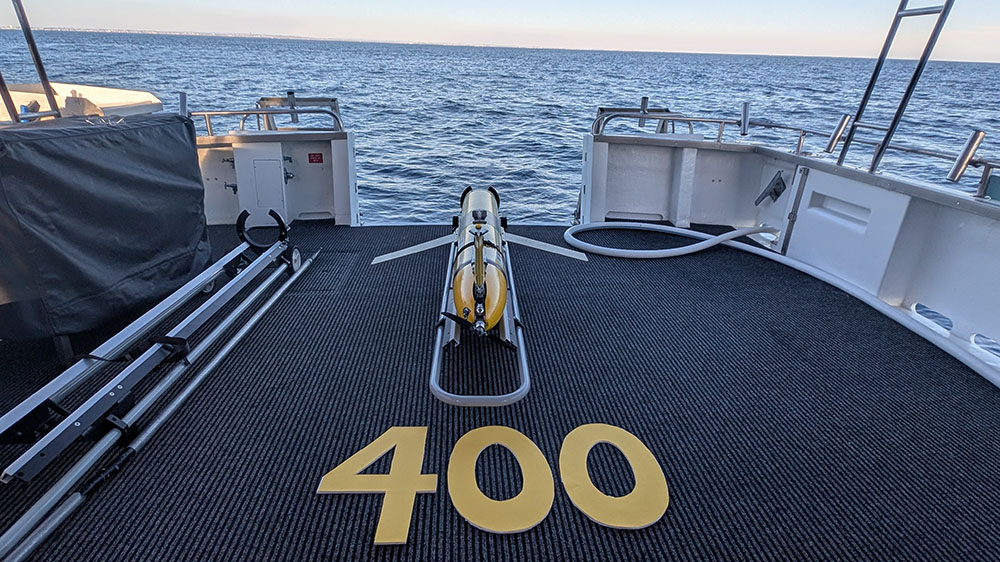
A 16-Year Legacy of Sustained Ocean Observation
Since January 2009, the University of Western Australia’s (UWA) IMOS Ocean
Glider team has been at the forefront of autonomous ocean observation. With unwavering commitment, the team has launched or recovered
ocean gliders every week for 16 years, culminating in the
400th mission in May 2025. This milestone marks a significant achievement in marine science, innovation, and collaboration, supported by the Integrated Marine Observing System (IMOS) and National Collaborative Research Infrastructure Strategy (NCRIS).
Key Achievements
-
400 Missions Completed
A testament to operational excellence and long-term vision in ocean monitoring. -
125,000+ Kilometers Traversed
Equivalent to circumnavigating the globe over three times. -
10,000+ Days at Sea
Demonstrating the durability and reliability of autonomous systems. -
1.5+ Million Vertical Profiles Collected
Providing high-resolution insights into ocean structure and dynamics. -
3.45+ Billion Data Points Generated
Enabling transformative research in oceanography, climate science, and marine policy.
Technology: Teledyne Webb Research Slocum Gliders
Nearly all missions have been conducted using
Teledyne Webb Research Slocum gliders, a class of autonomous underwater vehicles (AUVs) known for their:
- Endurance and reliability in long-duration missions
- Ability to operate in extreme conditions, including tropical cyclones
- Modular sensor payloads for measuring temperature, salinity, oxygen, chlorophyll, and more
- Energy-efficient propulsion using buoyancy-driven gliding
- These gliders have enabled continuous, high-resolution data collection across Australia’s vast and dynamic marine environments.
Scientific and Societal Impact
The data collected has:
- Supported numerous scientific publications and PhD theses
- Informed national and regional marine policy
- Enhanced marine operations and safety
- Contributed to global climate research and forecasting
Innovation and Leadership
Led by Professor Charitha Pattiaratchi, the UWA IMOS
Ocean Glider Facility has pioneered the use of autonomous underwater vehicles (AUVs) in Australian waters. Their work exemplifies:
- Technological innovation in ocean sensing
- Operational resilience in challenging marine environments
- Collaborative partnerships across academia, government, and industry
“The long-endurance, remotely piloted systems have revolutionized how ocean scientists monitor and understand the ocean, operating across vast distances and under challenging conditions,” Professor Pattiaratchi said.
“Each mission expands our knowledge of the marine environment, discover new processes and helping us tackle challenges from climate change to ecosystem health.”
Looking Ahead
As the team celebrates this milestone, the focus remains on expanding observational capabilities, integrating new sensor technologies, and continuing to support Australia’s role in global ocean monitoring networks.
Conclusion
The 400th mission is more than a number—it represents a legacy of dedication, scientific excellence, and the power of sustained investment in research infrastructure. The UWA IMOS Ocean Glider team stands as a global leader in autonomous ocean observation, setting the standard for the next generation of marine science.
